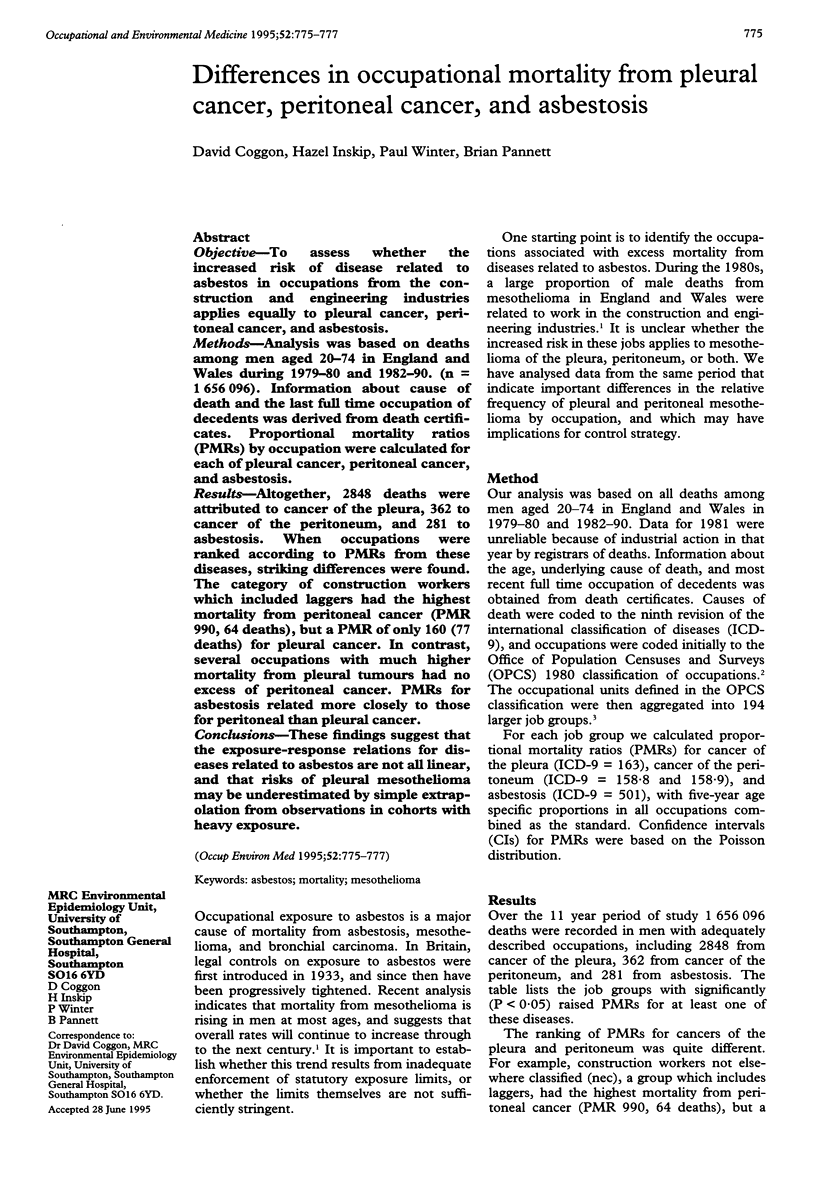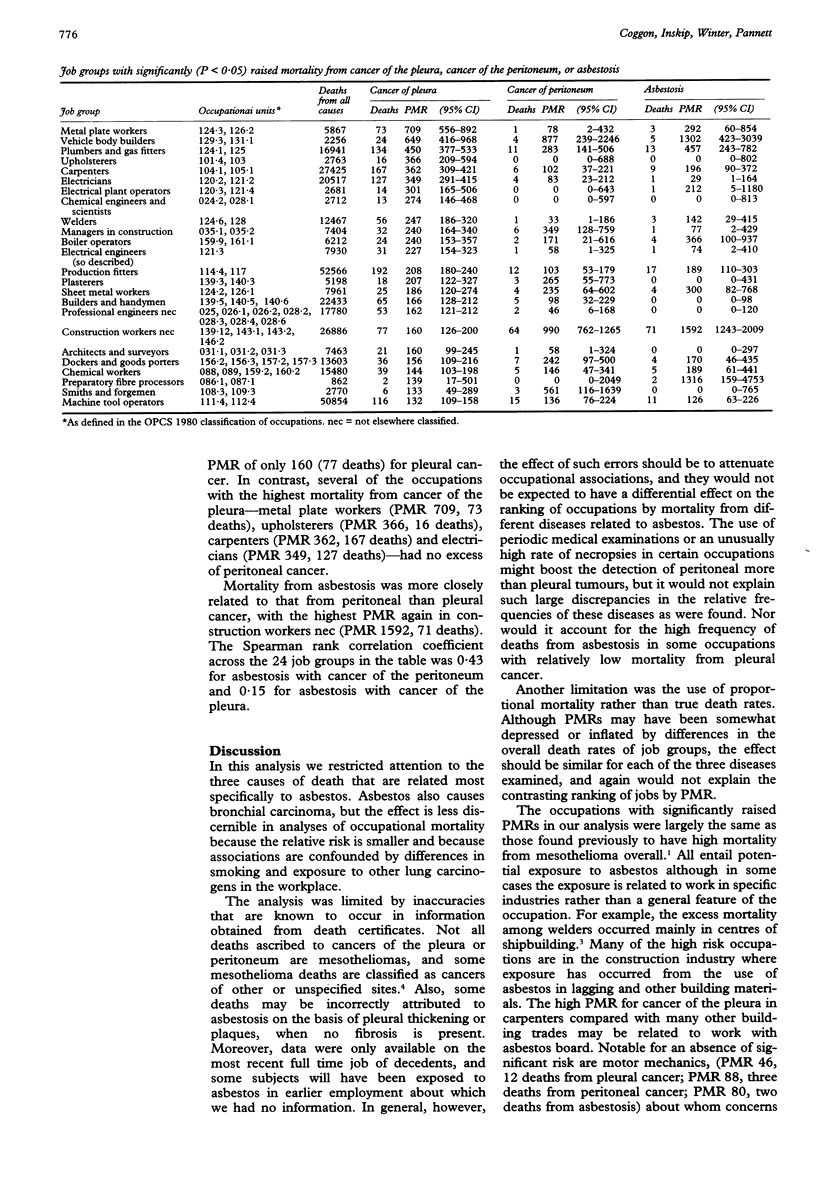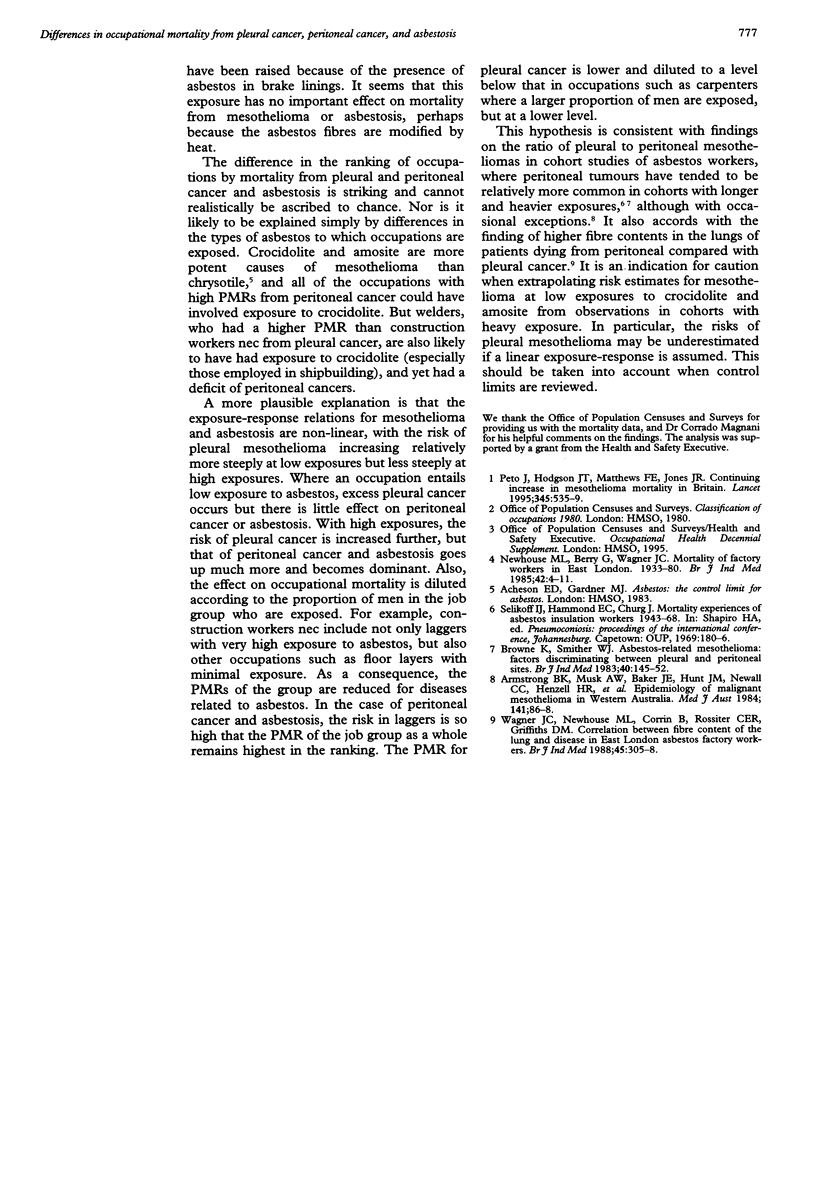Abstract
OBJECTIVE--To assess whether the increased risk of disease related to asbestos in occupations from the construction and engineering industries applies equally to pleural cancer, peritoneal cancer, and asbestosis. METHODS--Analysis was based on deaths among men aged 20-74 in England and Wales during 1979-80 and 1982-90. (n = 1,656,096). Information about cause of death and the last full time occupation of decedents was derived from death certificates. Proportional mortality ratios (PMRs) by occupation were calculated for each of pleural cancer, peritoneal cancer, and asbestosis. RESULTS--Altogether, 2848 deaths were attributed to cancer of the pleura, 362 to cancer of the peritoneum, and 281 to asbestosis. When occupations were ranked according to PMRs from these diseases, striking differences were found. The category of construction workers which included laggers had the highest mortality from peritoneal cancer (PMR 990, 64 deaths), but a PMR of only 160 (77 deaths) for pleural cancer. In contrast, several occupations with much higher mortality from pleural tumours had no excess of peritoneal cancer. PMRs for asbestosis related more closely to those for peritoneal than pleural cancer. CONCLUSIONS--These findings suggest that the exposure-response relations for diseases related to asbestos are not all linear, and that risks of pleural mesothelioma may be underestimated by simple extrapolation from observations in cohorts with heavy exposure.
Full text
PDF


Selected References
These references are in PubMed. This may not be the complete list of references from this article.
- Armstrong B. K., Musk A. W., Baker J. E., Hunt J. M., Newall C. C., Henzell H. R., Blunsdon B. S., Clarke-Hundley M. D., Woodward S. D., Hobbs M. S. Epidemiology of malignant mesothelioma in Western Australia. Med J Aust. 1984 Jul 21;141(2):86–88. [PubMed] [Google Scholar]
- Browne K., Smither W. J. Asbestos-related mesothelioma: factors discriminating between pleural and peritoneal sites. Br J Ind Med. 1983 May;40(2):145–152. doi: 10.1136/oem.40.2.145. [DOI] [PMC free article] [PubMed] [Google Scholar]
- Newhouse M. L., Berry G., Wagner J. C. Mortality of factory workers in east London 1933-80. Br J Ind Med. 1985 Jan;42(1):4–11. doi: 10.1136/oem.42.1.4. [DOI] [PMC free article] [PubMed] [Google Scholar]
- Peto J., Hodgson J. T., Matthews F. E., Jones J. R. Continuing increase in mesothelioma mortality in Britain. Lancet. 1995 Mar 4;345(8949):535–539. doi: 10.1016/s0140-6736(95)90462-x. [DOI] [PubMed] [Google Scholar]
- Wagner J. C., Newhouse M. L., Corrin B., Rossiter C. E., Griffiths D. M. Correlation between fibre content of the lung and disease in east London asbestos factory workers. Br J Ind Med. 1988 May;45(5):305–308. doi: 10.1136/oem.45.5.305. [DOI] [PMC free article] [PubMed] [Google Scholar]


